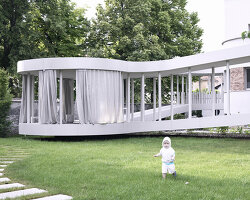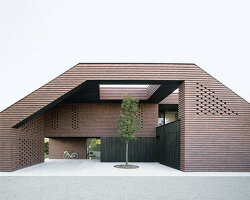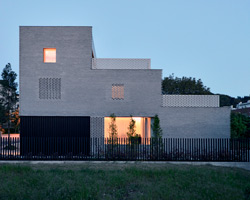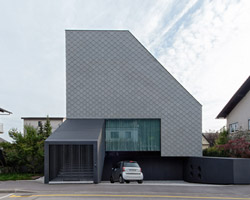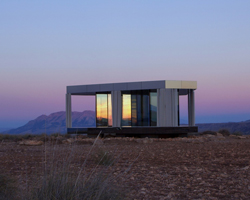‘two nests village’
slovenia-based firm OFIS architects have designed ‘two nests village’, a proposal for a housing and mixed-use development located in el paso, texas. the site is divided in equal halves: north and south. the north is proposed as phase II of the development because of its corner location which is best suited for commercial or mixed use. the housing complex is located in the quieter, southern half, and takes on the formation of a nest – a living mount of apartments, stuck one above the other. this particular form is ideal for protecting the structure from the sun and wind, while at the same time providing natural light, and good ventilation. the apartments are orientated towards the internal park towards the exterior, which allows intimacy, but also provides open views to inhabitants. apartments on level +1 which surround the internal park have atriums and terraces connected to the plaza.
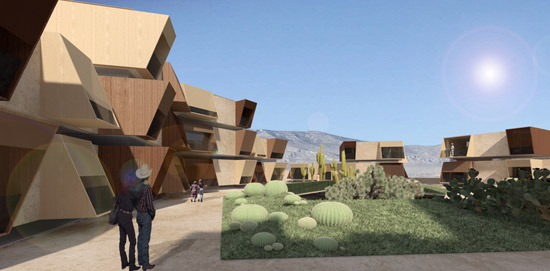
the landscape design draws on the natural environment around el paso. it is a combination of stones, sand and pebbles in different colors and textures. the plants include a combination of cactus, palm trees and desert plants which means that they do not require extra care and maintenance. the landscape creates flat area as well as ramps and slopes. these artificial mounts create the entrance to the plaza on level +1.
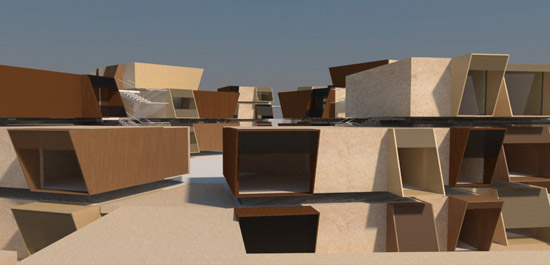 the unites are arranged in a repetitive manner
the unites are arranged in a repetitive manner
communal spaces surround the apartments. some areas are sunny and can be utilized on cold days, while others are shaded and protected from the sun and wind. other spaces are more intimate and closed, contrasting the more open central area. on the ground level, there is a garden planted with desert vegetation. other than an external covered parking lot and an entrance for bicyclesand bicycle storage, the rest of the site is pedestrian only.
the complex is higher in the north than it is in the south. the difference in levels creates terraces and a living roof. spaces between apartment entrances are airy and bright, covered to create a loggia effect. these are shared spaces. on top of the units there are roof terraces. some are covered, some not, creating spaces that can be used in all weather conditions.
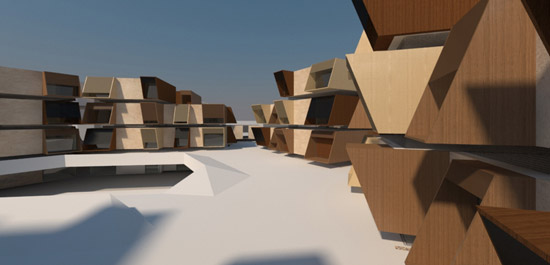
housing units are repetitive rectangular containers made in horizontal and vertical grid with common dimensions. the repeated layout will make it more economic and construction would be facilitated at a faster rate. all components of the units are standardized and simplified. they can be prefabricated and installed on site. the structure is made from reinforced concrete with standardized beam and column sizes.
there are two types of living units: 52 one bedroom apartments and 14 two bedroom apartments. they are repetitive and gathered together to create an enclosed unit.
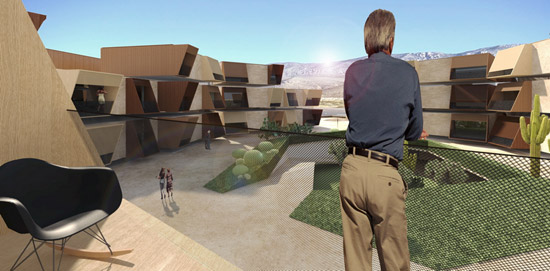 view into the central garden from one of the unit’s terraces
view into the central garden from one of the unit’s terraces
reinforced concrete structure with each unit or group of units forming a concrete box. the goal is to keep the heat and heat generating elements on the outside of the box and take advanatage of the concrete mass which slows the heat flow from the exterior to the interior during the day. the high volumetric heat capacity and thickness of the structure, prevents heat from reaching the inner surface. there is a shading system made from pre-cast wooden panels which produces protection from the sun, but also allows inhabitants to see through.the thick walls of the living units help maintain the right temperature inside. when temperatures fall at night, the walls re-radiate the heat back into the night sky. it is important that all the exterior walls have sufficient mass in order to prevent the ingress of heat into the interior.
unlike single family residences in a multi-family structure, providing natural light to every room is often impractical and even impossible. the typical apartment plan contains rooms which are dark and require additional artificial light, increasing the energy use of the building as well as creating heat from the light source which then increases the air-conditioning demand. this further increases the energy use of the building. this compounding effect can be avoided by using innovative light collection systems on the facades and the roof which collect sunlight and transport it deep inside buildings. sunlight is collected on the roof or exterior facade and channeled via optical cable to the interior of the building (current max. distances is 45 feet). once inside the space, the light flows through luminaries specifically designed to recreate the feeling of sunlight. this results in a bright, indoor environment, with the sense of sunlight and also eliminates the heat gain from the exterior. these light fixtures can also be used to enhance the light level and quality in north-facing rooms which do have windows, but because of their orientation, real sunlight is lacking or the lighting levels are inadequate. the lenses located in the solar panels are designed to track the sun via a photosensor which do not require pre-programming. the actual movement is achieved via a low-consumption motor.
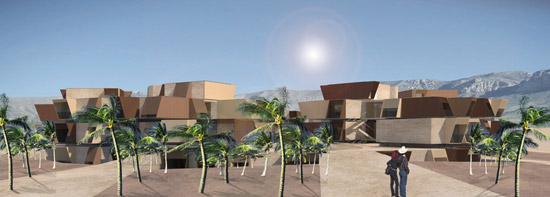 the landscaping draws on the natural environment of el paso, texas
the landscaping draws on the natural environment of el paso, texas
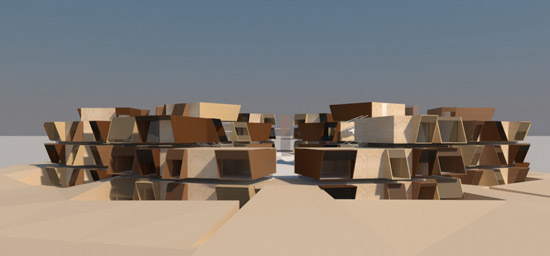 rendering of two nests village
rendering of two nests village
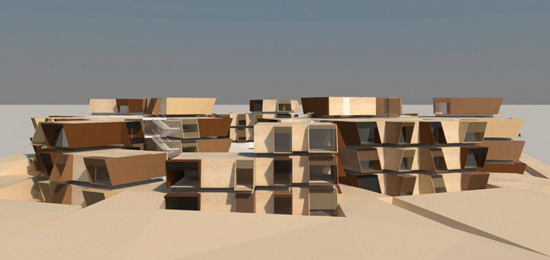 the units create a nest formation around a central communal space
the units create a nest formation around a central communal space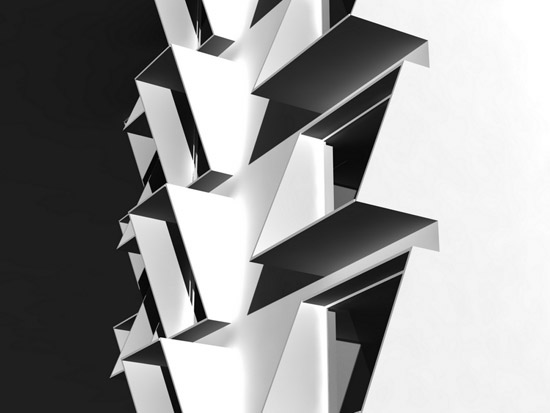 detail
detail  two nests – north and south
two nests – north and south
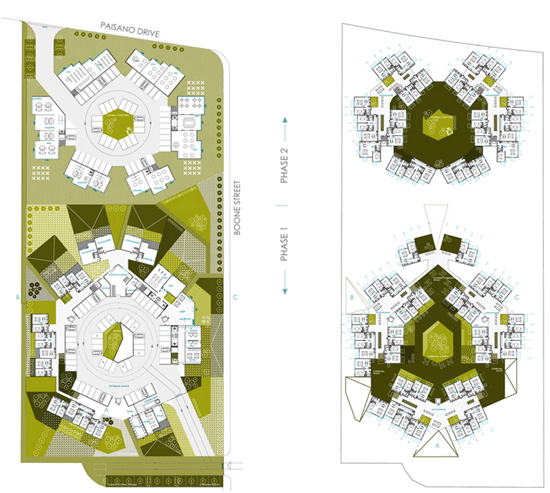 the two nests
the two nests
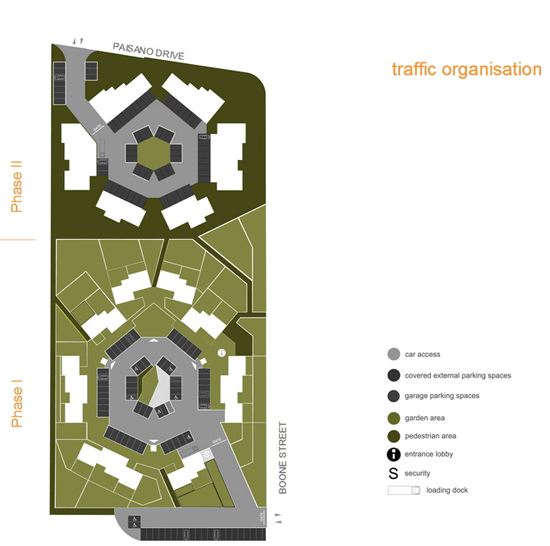
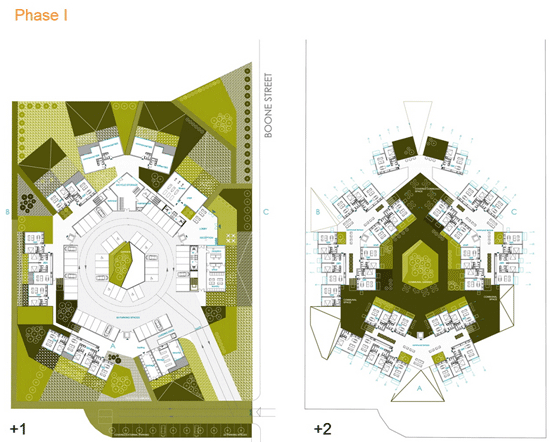
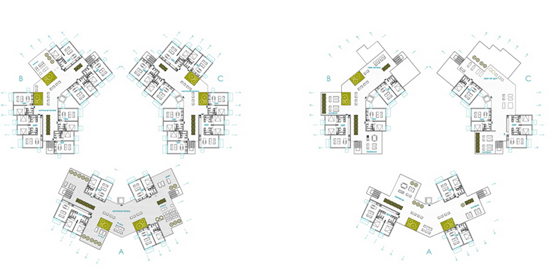 phase 1
phase 1
 typology of apartments
typology of apartments
 common areas
common areas
 air flow diagram
air flow diagram
 shading diagram
shading diagram 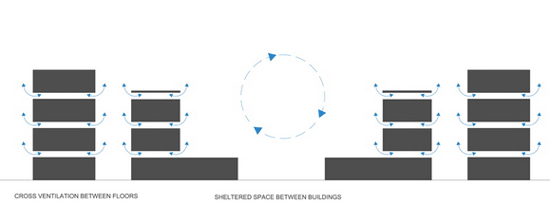 natural ventilation
natural ventilation
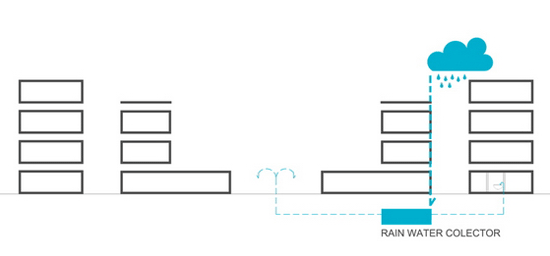 water usage
water usage
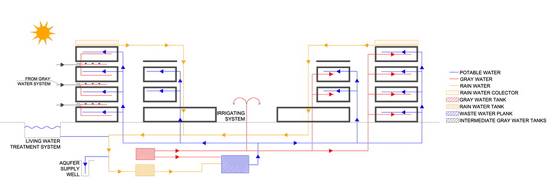 water flow system
water flow system
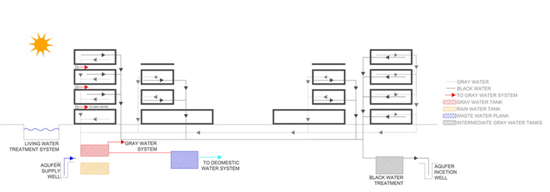 drainage system
drainage system
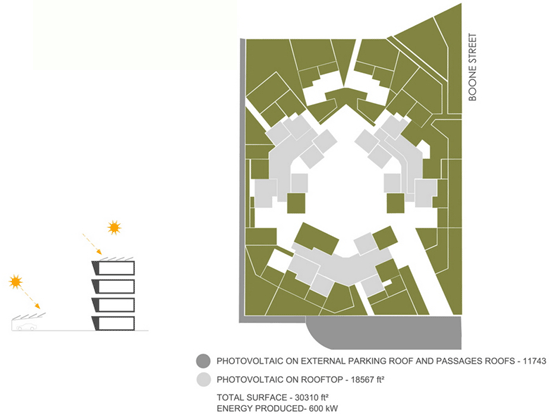 diagram of photo voltaic usage in construction
diagram of photo voltaic usage in construction
two nests village utilizes solar energy. el paso has the highest energy density of any texan site making it an ideal location for solar power generation. it has the capabilities of yielding 8,000 megajoules of energy per square meter over the span of a year.
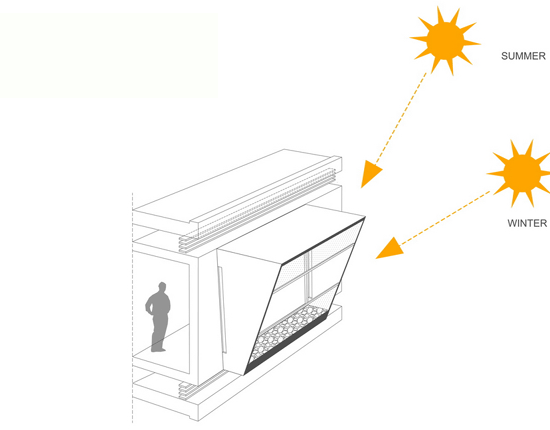 element of sun protection
element of sun protection
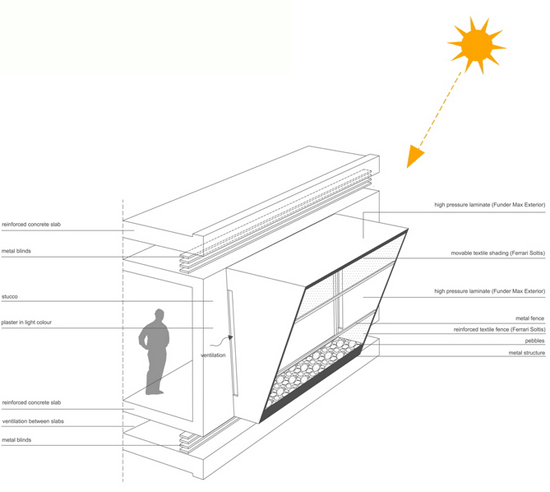 materials diagram
materials diagram
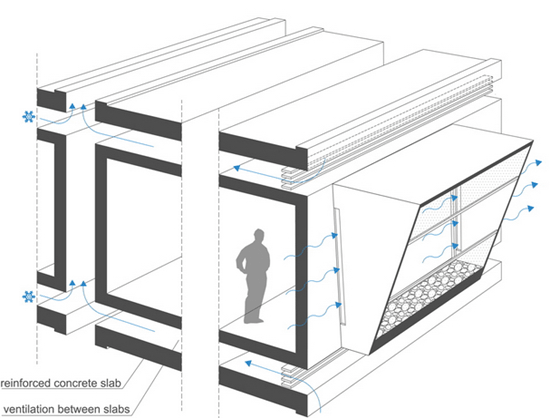 natural cooling and ventilation
natural cooling and ventilation 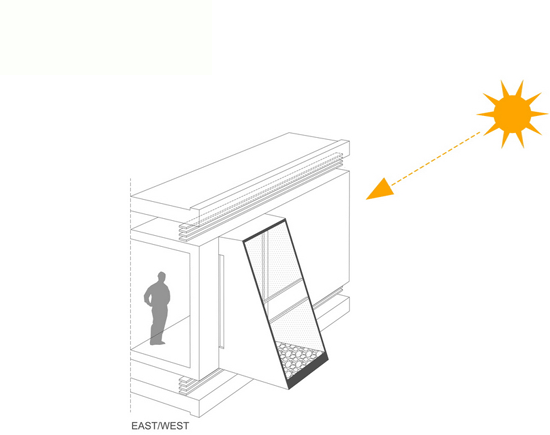 loggia typologies
loggia typologies
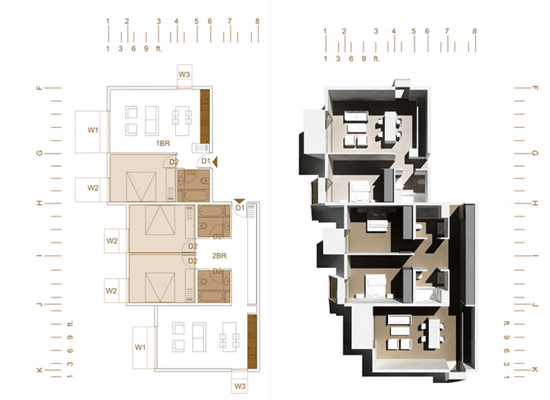 units are repetitive and can be prefabricated
units are repetitive and can be prefabricated
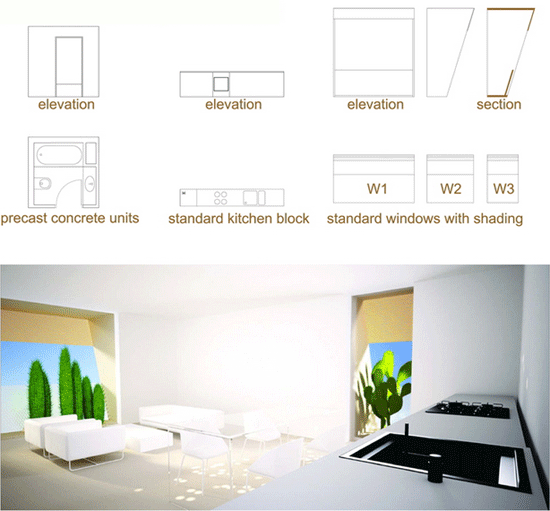 elements of furniture are also repetitive and can be prefabricated
elements of furniture are also repetitive and can be prefabricated
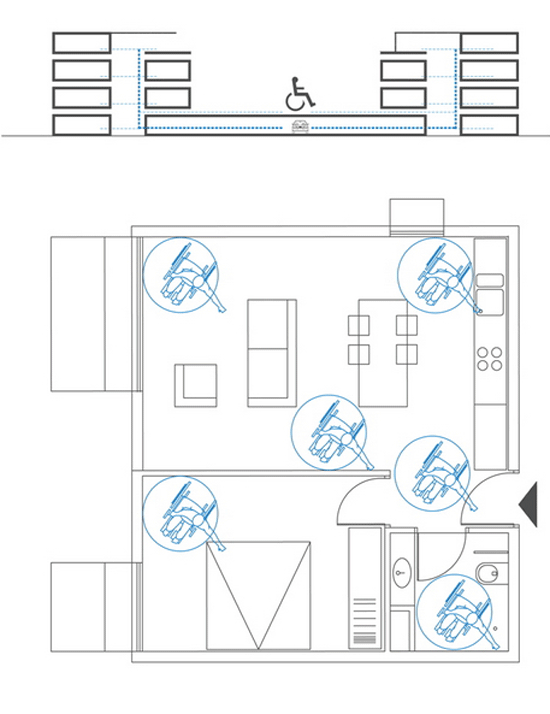 handicap friendly
handicap friendly


